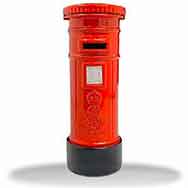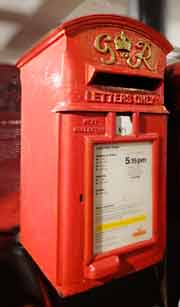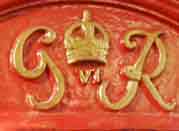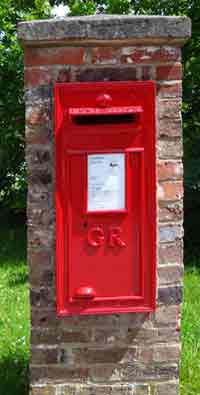Posting/mailing letters and cards early-mid 20th Century UK

This page considers the difference between the terms 'mail' and 'post' and goes on to discuss how and where letters and cards, etc. used to be posted. Features are how the public could always tell what time the next collection would be and how interested individuals could tell in which monarch's reign a post box was manufactured.
____
By the webmaster, based on firsthand observations, firsthand contributions and visits to museums
Post or mail: what's the difference?
The word 'mail' is a comparatively recent introduction into the English language. While I was growing up in 1940s and 1950s Britain, we 'posted' letters and cards, we didn't 'mail' them, and the postman, not the mailman delivered the 'post' not the 'mail'.
Postal collections and catching the post
There were several postal collections a day and they were extremely reliable. What was more, we always knew whether or not we had caught the post because there was a small white enamel tablet on the post box which stated when the next post would be. You can see it in the first photo below. A new, updated tablet was slotted in every time that that the door was opened for collection. When the door was closed, the bar above prevented anyone unorthorised from tampering.
Late postal collections in the mid-20th century
contributed by Neil Cryer, recollections
While I was away at university in the 1950s, I could cycle to Exeter St Davids station and post letters and cards home to Cambridge as late as 11.00 at night. The sorting was on the train and everything always arrived the next morning. There was no extra charge for this - and there was no first or second class.
Post boxes
Provided that we had the appropriate postage stamp, we posted letters, ready-stamped, in what were variously called post boxes, letter boxes and pillar boxes. For larger items like packages and parcels, we had to go to the post office for the item to be weighed and costed.

George VI UK post box. Photographed in Bath Postal Museum
Note the small white tablet, just below the postage slot, which informed when the next collection would be.

Enlargement showing that the monarch was George VI.

Older Georgian UK post box without the tablet showing the next collection. Photographed in Fagans Museum of Welsh Life.
I suppose that 'letter box' and 'post box' were general names and that 'pillar box' was originally for freestanding column-style boxes, but people just seemed to use whatever term came first to mind. The term 'mail box' was never used.
Post boxes were always red and showed the name of the monarch at the time of installation, but as I was never interested in this at the time, I took little notice. In view of the Second World War and the austerity afterwards, I doubt if there were many new post boxes when I was a child. Even Victorian post boxes were still in use.
Identification of Geogian post boxes
contributed by Chris Hayward, comment
The Georgian post box in the last of the the above pictures has no numeral, so must be from the time of George the Fifth. Before him there had not been a George for 80 years, which was before the establishment of the Penny Post in 1840. Note that this post box does not have the small white tablet for details of collection times.
| sources | webmaster | contact |
Text and images are copyright
If you can add anything to this page or provide a photo, please contact me.



